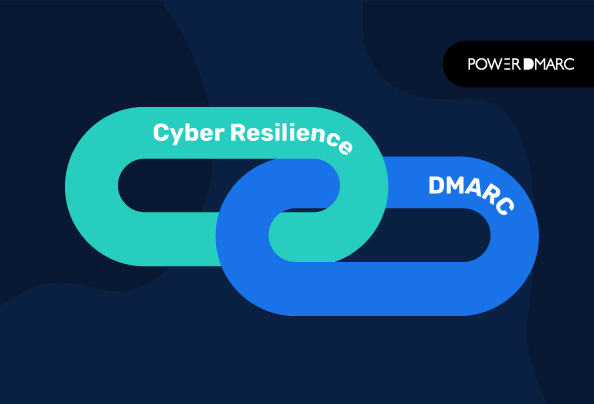Cyber resilience builds on the baseline of good cyber security practices by addressing businesses’ ability to withstand, recover and counter cyber threats. Enterprises and organizations need to have a robust cyber resilience framework in place for their domains to ensure communication is airtight and data leakages are minimized. Making DMARC a part of your company’s cyber resilience framework can help you gain a high degree of protection against some common types of cyberattacks.
What is Cyber Resilience & why do you need it?
The internet is a valuable resource that delivers convenience and value to nearly every company. At the same time, the internet poses a significant risk to businesses and their customers. A successful cyber-attack could cause catastrophic financial damage and major reputational damage.
Establishing Cyber Resilience is the first step toward implementing a fully Cyber Resilient Enterprise. Cyber Resilience is specifically targeted at enabling the organization to undermine its susceptibility to cyber risks and attacks, respond effectively to attacks and emerging threats, survive, recover and bounce back from cyber-attacks, and stay in business following an attack.
The 5 tiers to achieving Cyber Security Resilience
A 5 tiered approach to cyber resilience can help organizations better protect their data. As listed in the IT governance framework for information technology organizations, they are as follows:
1. Identify
The first step to implementing a Cyber Resilience plan for your enterprise is to identify the need for security protocols and detect vulnerabilities in your existing infrastructure. Without identifying the problem, you can’t move over to finding the solution!
2. Protect
After assessing and identifying vulnerabilities, the next step is implementing actionable measures to protect your organization. This includes configuring cloud, network, information, and email security protocols.
3. Detect
In case of an attack outbreak, you need to have measures in place to detect it as soon as possible. The more prolonged an attack is, the more financially damaging it gets for your organization, and the longer it will take to recover from it.
4. Respond
Responding to cyber threats is often time-consuming and arduous. The first step is to contain the breach so it doesn’t continue to wreak havoc. If it is a case of an email security breach like a domain spoofing attack perpetrated through an unknown IP address, you can single out and blacklist the IP address to stop the attacker from spoofing your domain again in the future.
5. Recover
A major attack or data breach can be financially draining and stressful. To help you with the recovery process you may consider having a cyber insurance plan in place. Consider also keeping data backups for your important resources to recover from any data loss.
Where does DMARC fit into your Cyber Resilience Framework?
DMARC can prove to be a useful protocol that comes into play in the Protect and Detect stages of your cyber resilience journey.
How does DMARC protect against attacks?
DMARC is an email authentication protocol that allows domain owners to verify the authenticity of emails being sent from their domain. DMARC reject policy protects organizations from email-based attacks such as phishing, spoofing, CEO fraud, and BEC.
How does DMARC detect attacks?
DMARC has a reporting feature that can be enabled for sending domains. When enabled, the receiving mailbox provider will send a DMARC report to the sender’s configured email address. These reports are of two types:
- Aggregate: to assemble and view your SPF and/or DKIM authentication results, detect inconsistencies in email deliverability and failures in delivery, view your email sending sources along with their host IP addresses and organizational domains.
- Forensic: to detect any suspicious activity on your email domain such as an attempted spoofing attack.
PowerDMARC is your all-in-one email authentication service provider, helping global organizations protect their emails and information. We specialize in DMARC deployment, management, and maintenance, making it easy and hassle-free for users. Take a free trial to test it out yourself!
- Email Safety 101 to Fight Crypto Scams - April 30, 2024
- How to Find the Best DMARC Solution Provider for Your Business? - April 25, 2024
- PowerDMARC and Zendata Forge Partnership to Enhance Domain Security - April 25, 2024
